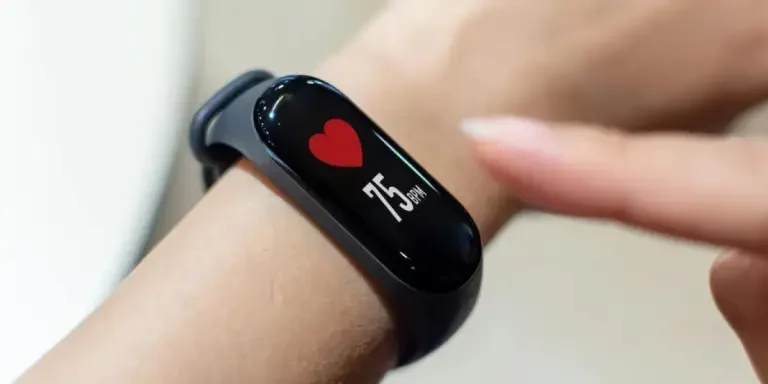In the bustling realm of wearable technology, smart bracelets have emerged as a frontrunner, seamlessly merging health and fitness functionalities with everyday convenience. These sleek wrist companions, equipped with cutting-edge sensors and intuitive interfaces, are transforming how professionals monitor their well-being, from tracking vital signs to optimizing workout regimens. As the global market witnesses an upsurge in demand, understanding the capabilities and benefits of these devices becomes paramount for retailers aiming to cater to a discerning clientele.
Table of Contents:
1. 2024 Market snapshot: Understanding the global demand
2. Key considerations for product selection
3. Spotlight on top smart bracelet innovations
1. 2024 Market snapshot: Understanding the global demand
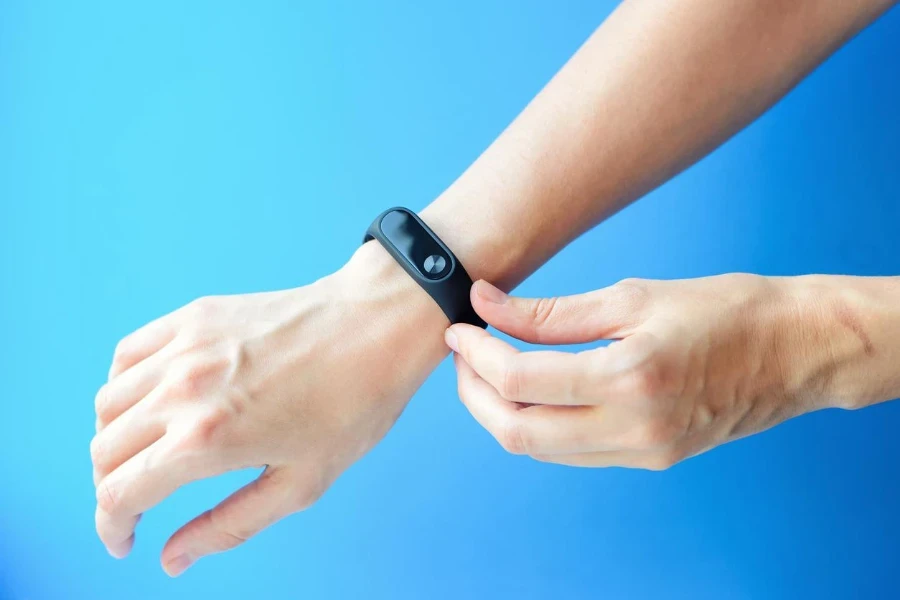
Global sales and growth projections
The smart bracelet market has been on a steady rise, with projections indicating significant growth in the coming years. The global smart wristband market size was USD 1.927 billion in 2021 and the market is projected to touch USD 2.698billion by 2030, exhibiting with a growing Compound annual growth rate (CAGR) of 3.72% during the forecasting period.
This surge underscores the global appetite for these devices, with regions like Asia-Pacific and Europe also contributing to the burgeoning demand.
Consumer preferences and behavior
As the market matures, consumer preferences are becoming more refined. While basic fitness tracking remains a core feature, there’s an increasing demand for advanced health metrics, sleep analysis, and integration with other smart devices. Features such as blood oxygen levels, stress monitoring, and even ECG have become sought-after functionalities. Moreover, the integration of AI-driven insights, offering personalized fitness and health recommendations, is gaining traction among users who seek a more tailored experience.
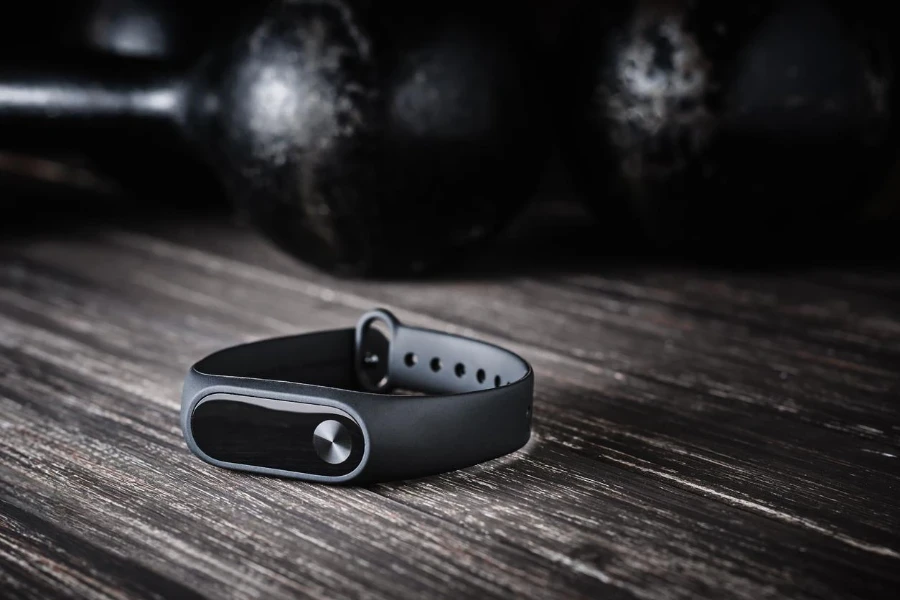
Competitive landscape
The smart bracelet industry is characterized by fierce competition, with established brands and emerging players vying for market share. Brands like Fitbit and Apple continue to dominate with their innovative offerings. Fitbit, for instance, has been lauded for its comprehensive health tracking features, while Apple’s integration of its smartwatch with its broader ecosystem gives it a unique edge. However, newer entrants are not far behind, introducing competitive features at attractive price points, ensuring that the market remains dynamic and ever-evolving.
This section provides a snapshot of the current market scenario, emphasizing the growth potential and evolving consumer preferences. As retailers navigate this landscape, staying abreast of these trends will be crucial in making informed product selection decisions.
2. Key considerations for product selection
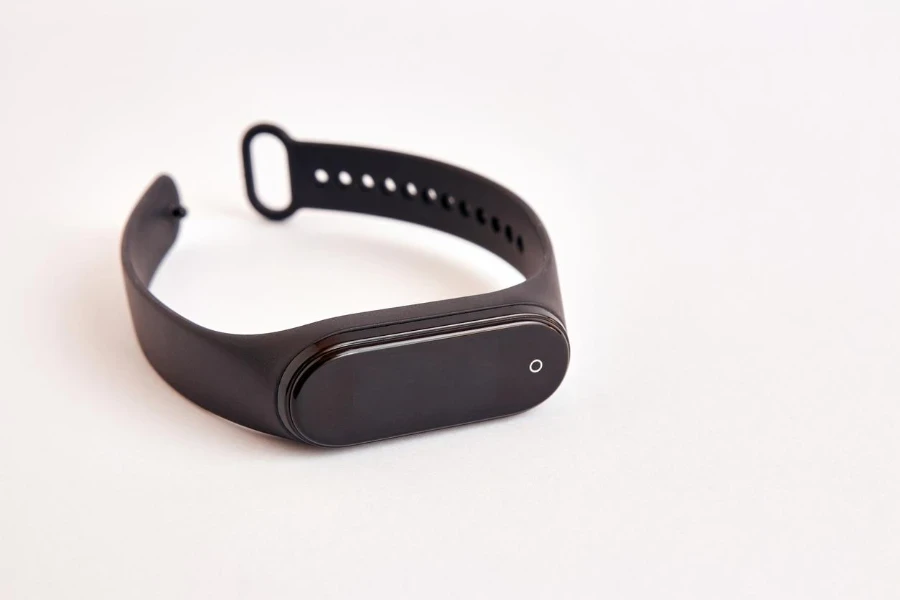
Technological advancements
The smart bracelet industry is at the forefront of wearable technology, continuously pushing the boundaries of what’s possible. As we delve deeper into 2024, several technological advancements stand out:
Advanced health metrics: Beyond the basic step counting, modern smart bracelets are equipped with features that monitor blood oxygen levels, stress, and even offer ECG functionalities. These devices are transforming into comprehensive health monitors, providing users with a holistic view of their well-being.
AI-driven insights: The integration of Artificial Intelligence in smart bracelets has taken user experience to new heights. These devices now offer personalized health and fitness recommendations, adapting to individual user behaviors and patterns. This personal touch ensures that users receive advice and insights tailored specifically to their needs.
Enhanced connectivity: Modern smart bracelets are no longer standalone devices. They are designed to seamlessly integrate with a broader ecosystem of devices, be it smartphones, tablets, or even smart home systems. This interconnectedness ensures that users can access and analyze their health data across multiple platforms.
Augmented reality (AR) integration: Some of the latest smart bracelets are dabbling in augmented reality, offering users an immersive experience. Whether it’s for fitness training or navigation, AR integration in smart bracelets is opening up new possibilities for user interaction.
Extended battery life: Technological advancements aren’t just about features; they also encompass the overall user experience. Recognizing the need for devices that last longer, manufacturers are investing in battery technology, ensuring that users don’t have to charge their devices frequently.
These advancements underscore the rapid pace of innovation in the smart bracelet industry. For retailers, understanding these technological shifts is crucial, as it provides insights into what consumers are looking for, ensuring that their product offerings are in line with market demands.
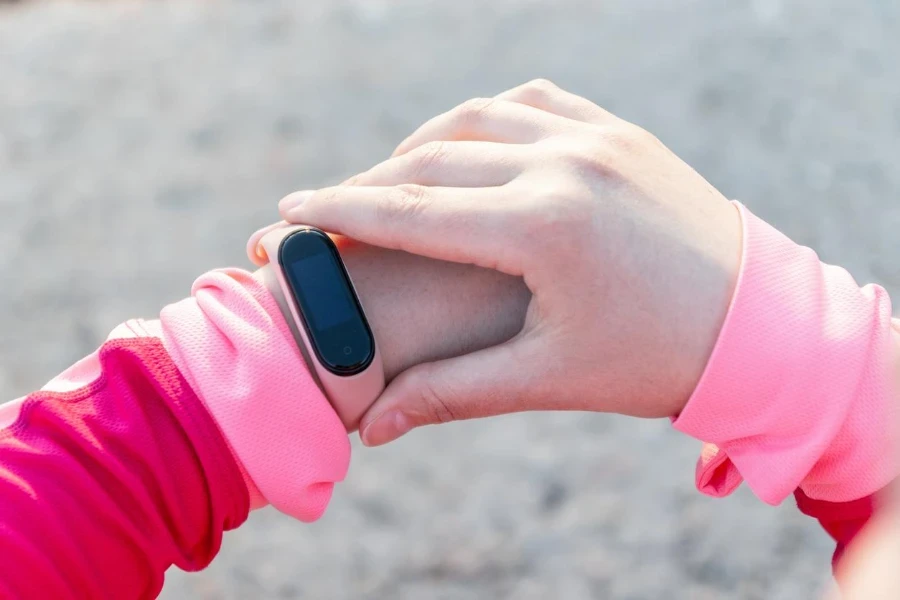
Compatibility and integration
In today’s interconnected world, the ability of a device to seamlessly integrate with other platforms and devices is crucial. Smart bracelets are no exception. Consumers are increasingly seeking wearables that can effortlessly sync with their smartphones, tablets, and even smart home systems. This not only enhances user experience but also ensures that health data can be accessed and analyzed across multiple platforms, offering a holistic view of one’s well-being.
Design and aesthetics
While functionality is paramount, the design and aesthetics of smart bracelets play a significant role in their market appeal. Modern consumers are looking for devices that are not just technologically advanced but also stylish and versatile. Brands are responding to this by offering a range of designs, from sleek and minimalist to bold and statement-making. The balance between style and functionality is a key determinant in product selection.
Battery life and durability
A device’s longevity and durability are vital considerations for retailers. One of the standout features of leading smart bracelets is their impressive battery life. The average smartwatch lasts for about 1-2 days with battery power of 200 mAh, while some devices can last up to a full week on a single charge with battery power over 500 mAh. Additionally, robust build quality ensures that these wearables can withstand daily wear and tear, making them a reliable choice for consumers.
Price points and value proposition
The smart bracelet market is diverse, with products available at various price points. While premium brands offer a range of advanced features, there are also budget-friendly options that provide core functionalities without compromising on quality. For retailers, understanding this price spectrum and the value proposition of each product is essential. Offering a mix of high-end and affordable options ensures a wider reach and caters to a diverse clientele.
In the rapidly evolving landscape of smart bracelets, these considerations are pivotal for retailers aiming to make informed product selection decisions. By staying attuned to technological advancements, understanding consumer preferences, and evaluating the competitive landscape, retailers can position themselves for success in this dynamic market.
3. Spotlight on top smart bracelet innovations

Leading smart bracelet models
2024 has seen a surge in innovative smart bracelet models, each vying for the top spot in the market. One standout is the Bellabeat Leaf Urban, which has been hailed as the best piece of smart jewelry for most women according to Business Insider. Not just a fitness tracker, it’s a work of art that can be worn as a bracelet, necklace, or brooch. It tracks activity, stress levels, mindfulness, and sleep, all while boasting an eco-friendly design made from recycled wood composite.
Ringly’s Aries smart ring and bracelet have also made waves, offering activity tracking and notifications in a high-end design. Made of stainless steel coated in precious metals and adorned with semi-precious gemstones, Ringly’s products are a blend of luxury and functionality.

Unique selling points
The best products in the market always have features that set them apart. For instance, the Bellabeat Leaf Urban stands out with its stress prediction algorithm. By analyzing factors like sleep quality, exercise, and meditation practices, it can predict a user’s resistance to stress on any given day. Ringly’s Aries, on the other hand, offers customizable notifications for hundreds of popular apps, ensuring users never miss an important alert.
Niche and specialized products
While many smart bracelets cater to a broad audience, some target specific consumer needs. The Misfit Ray is a prime example. It’s a sleek fitness tracker that looks more like jewelry than a tech gadget. It offers robust workout and fitness features, sleep tracking, and smart notifications, all without the need to charge it.
Conclusion
The smart bracelet market is ever-evolving, with innovations emerging at a rapid pace. For retailers, staying ahead of the curve is crucial. Embracing change and anticipating future trends is the key to success. As technology advances, consumer demands shift, and new players enter the market, it’s essential to remain adaptable and informed. By understanding the current landscape and keeping an eye on emerging innovations, retailers can ensure they’re always offering the best products to their customers, securing their place in this dynamic industry.
